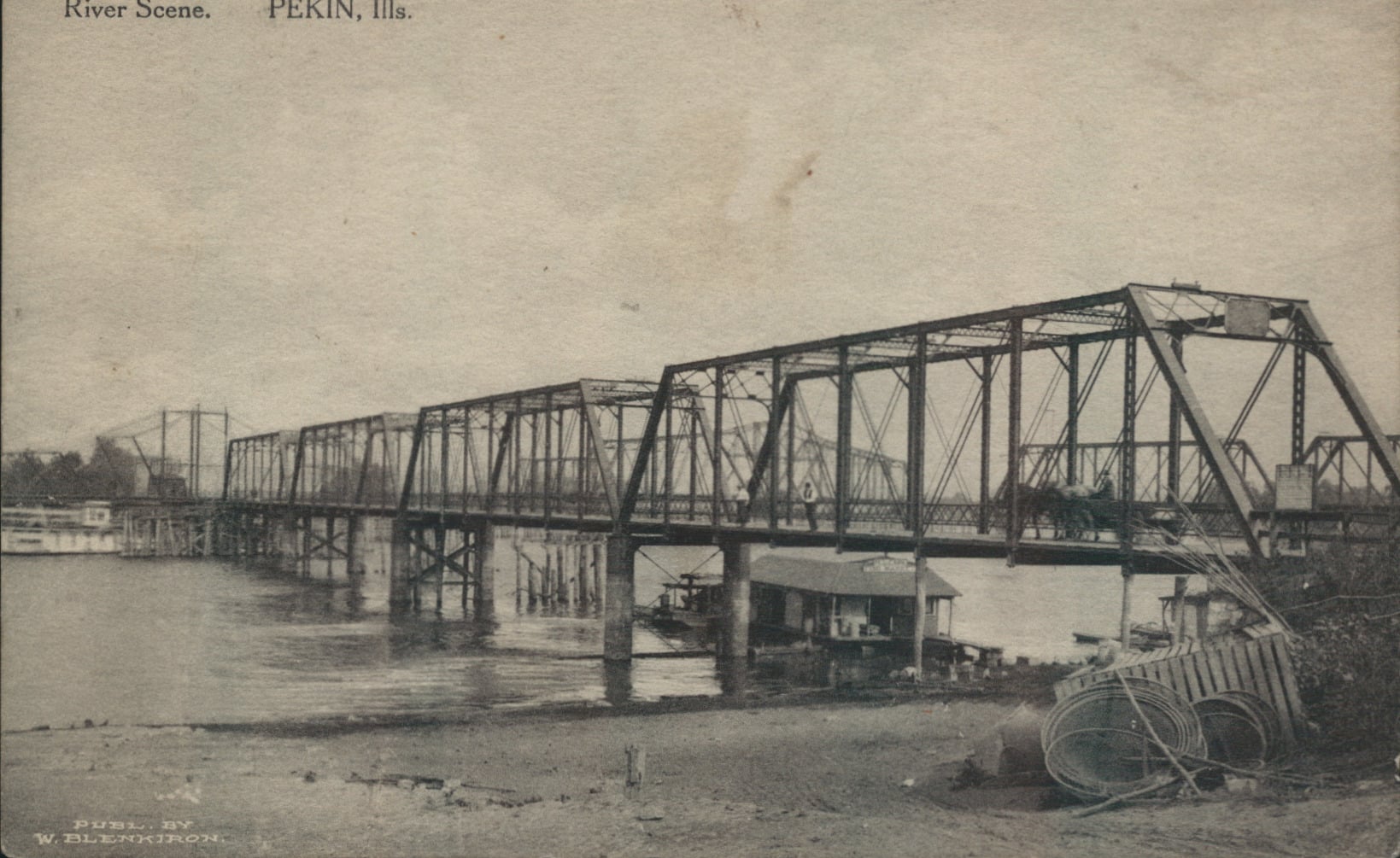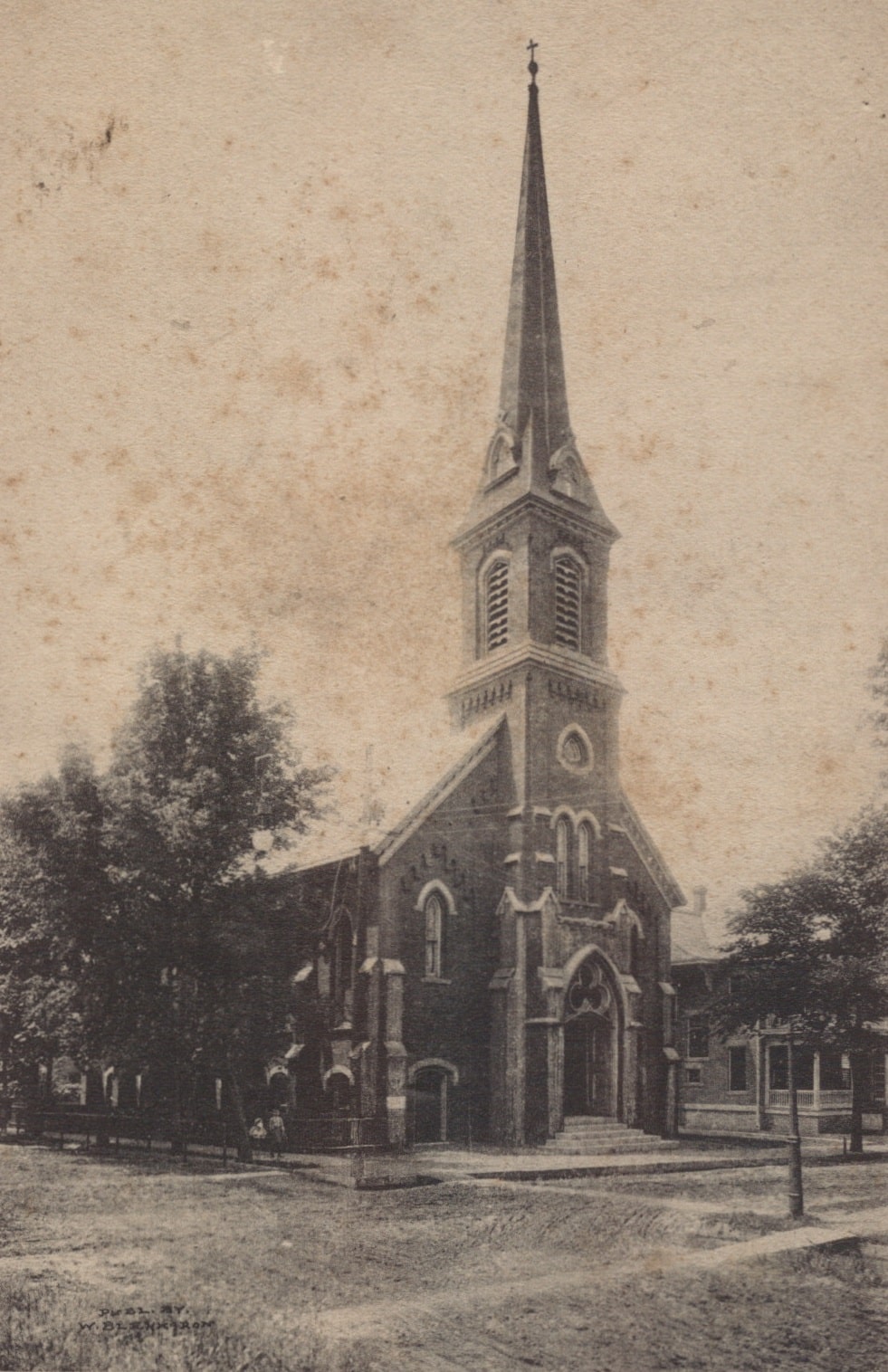This is a reprint of a “From the Local History Room” column that first appeared in Oct. 2013, before the launch of this weblog.
Changes and developments come to a community day by day, week by week. New buildings and homes are erected, old ones are demolished, new businesses come to town while older ones expand or close their doors.
Sometimes changes can come rapidly and dramatically, but usually they are gradual and often not noticed at first – and before we know it, years have gone by and a city’s or town’s appearance bears little or no resemblance to the way it looked in the past.
To help Pekin residents remember or discover what their city used to look like, various publications compilations of photographs are available in the Pekin Public Library’s Local History Room for study, musing and reminiscing. One of them, often quoted in this column, is “Pekin: A Pictorial History,” first published in 1998 and updated in 2004. The 1949 “Pekin Centenary” and 1974 “Pekin Sesquicentennial” volumes are also filled with old photographs.
The compilation of old Pekin photos that perhaps is the most effective way of showing the ways Pekin has changed is Rob Clifton’s “Pekin History Then and Now,” which, as the title indicates, reprints a vintage photo of Pekin on one page and then displays a contemporary photo of the same location on the opposite page. Sometimes the same structures still exist in the contemporary photos, but usually something new has taken their place.
Among Clifton’s sources or guides for finding old photos is a publication that was prepared and issued in July 1912 by The Commercial Club of Pekin (ancestral to the Pekin Area Chamber of Commerce), having the length title, “Pekin, Illinois – Interesting Views of Public Buildings, Churches, Schools, Clubs, Office Buildings, Residences, Parks, Street Scenes and the Industries of the City.”
The book was arranged and compiled by Albert Walter Lewis, and almost all of its photographs and images were the work of Pekin’s pioneer photographer Henry Hobart Cole. As mentioned in previous Local History Room column, Cole also produced a small booklet of engravings and photographs, “Cole’s Souvenir of Pekin,” as a way to advertise Pekin to businessmen and to give visitors and tourists a handy memento of their stay.
Lewis’s publication from July 1912 is something like Cole’s “Souvenir,” only on a larger scale. It is mostly a collection of photographs, with a few drawing or engravings, but it also has a few pages of text that describe and promote Pekin as an ideal place to live, work and worship.
Those pages include section headings such as: “Pekin’s Progressiveness,” “Reasons Why Manufacturers Seeking Locations Should Come to Pekin,” “Pekin’s Manufacturing Interests,” “The Near-By Coal Mines Mean Cheap Fuel for Industries,” “Excellent Railroad Advantages and Transportation,” and, “Pekin’s Beautiful Homes, Parks, Drives, etc.”
As a sample of these promotional essays, the latter section says:
“Few cities of our size present as attractive an appearance as is given Pekin by its many handsome residences, its neatly kept broad lawns, its magnificent shade tree, clean streets and drives. Every street and avenue in each direction is adorned with great shade trees, which throw out their massive branches until they meet in the center of the streets.
“There are five public parks, and it is the aim to make them as popular as possible, and that the public should be invited to them. The largest of the parks is Mineral Springs Park, which contains a large pavilion, children’s play grounds, base ball diamond, swimming pools and natural mineral springs, whose waters have a curative power of a high value. These parks mean a healthy city for any one to live in, and is the best evidence of a spirit of progress, and among the first things that a thoughtful manufacturer looks for today in seeking a factory location.
“There are many fine drives about the city, which give to the visitor many visions of the beauties of the city.”














